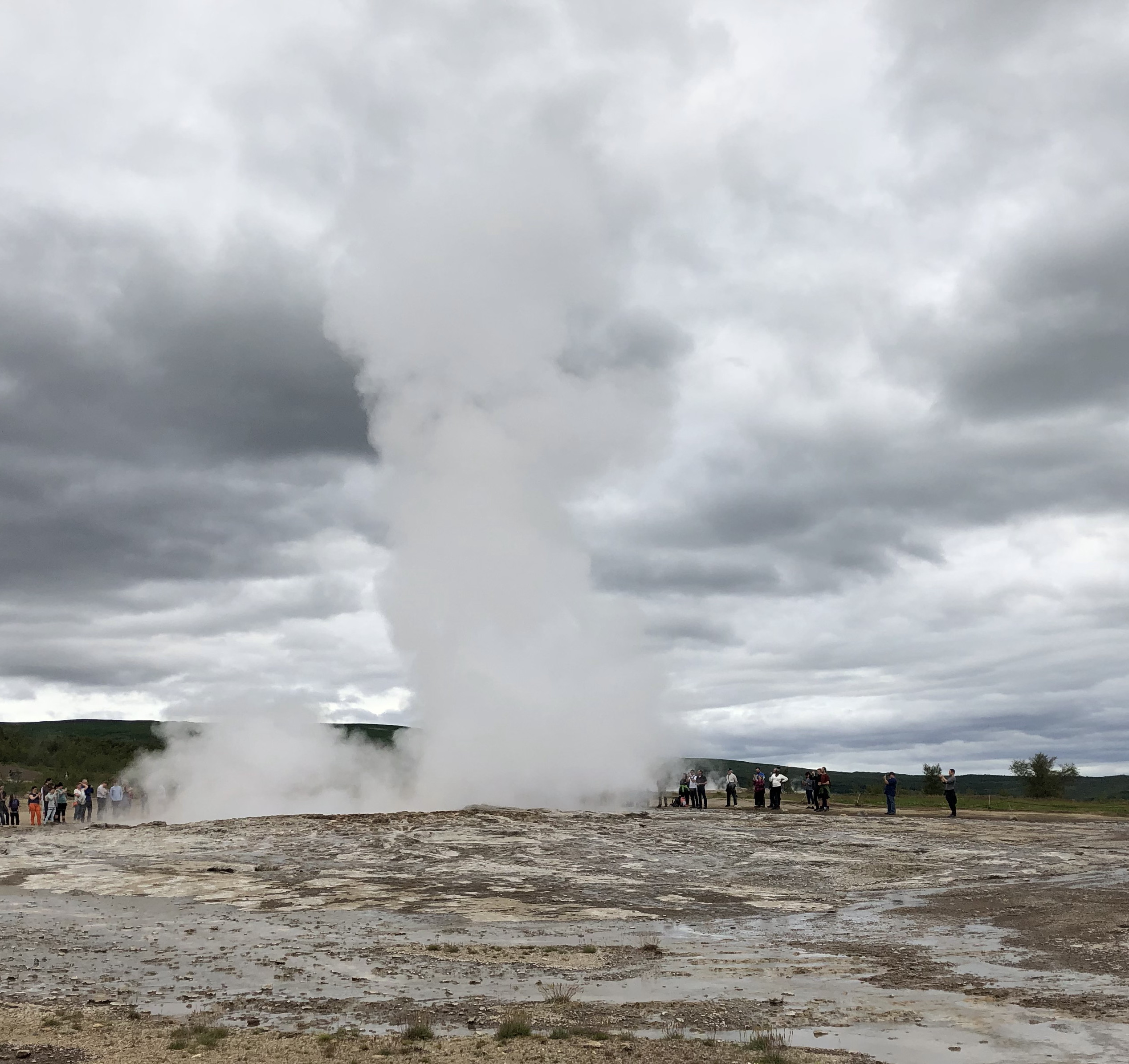
| Canfield Travels |  |
| Iceland 2019 #1 August 18, 2019 |
Iceland: Land of Fire and Ice
Volatile Iceland
Iceland is situated on a massive 11,000 mile long rift
between two of the earth’s major tectonic plates.
It is one of the youngest land masses on the planet, formed
by underwater volcanic eruptions along this joint of the North American and
Eurasian plates around 20 million years ago.
Molten rock (magma) continues to rise from deep within.
The result is clearly visible at Thingvellir National Park
where the rift continues to broaden from 1/16 to 3/4 of an inch per year.
Volcanoes
Volcano cones are seen throughout Iceland. Some are active,
some are extinct and some are merely dormant. Several of the most active
volcanoes are found beneath glaciers.
Lava
flow
Lave
flow to the sea
Hexagonal Columns
Columnar jointed basalt is formed when lave cools and
contraction causes the new rock to split into six-sided horizontal or vertical
columns. A hexagon is the polygon closest to a circle that can completely cover
an area by tessellation.
What is tessellation?
Where else can we see hexagonal patterns in nature?
Great Geysir, which is now inactive, gave its name to all spouting
hot springs around the world.
